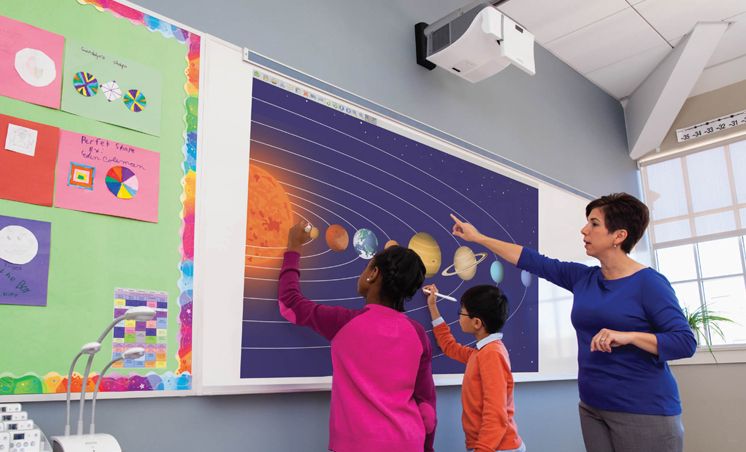
This article looks at the role of translation as an activity for learners in the ELT classroom.
It does not consider the role of the L1 as a teaching tool, for example for classroom management, setting up activities, or for explaining new vocabulary. This question has been discussed elsewhere on the Teaching English site. The article starts by looking at what we mean by translation as an activity in the language classroom, and then briefly reviews the history of translation in language learning within the framework of various methodologies. It then considers some of the many objections ELT thinkers and practitioners have had to translation, and some of the possible benefits of its use. It concludes with some observations about how to make translation tasks successful, and some activities.
Introduction
Translation was a significant part of ELT for a long time, and then a significant missing part for a long time also. With the arrival and then total dominance of communicative methodologies, translation was quickly consigned to the past, along with other ‘traditional’ tools such as dictation, reading aloud and drills. However, it and these other abandoned activities are now a feature of many communicative classrooms and successful aids to learning, although the approach to using them has changed. As Duff (1989) says, teachers and students now use translation to learn, rather than learning translation. Modern translation activities usually move from L1 to L2, (although the opposite direction can also be seen in lessons with more specific aims), have clear communicative aims and real cognitive depth, show high motivation levels and can produce impressive communicative results.
The history of translation in ELT methodologies
As mentioned above, translation was the basis of language teaching for a very long time, and then rejected as new methodologies started to appear. It was a key element of the Grammar Translation Method, which was derived from the classical method of teaching Greek and Latin. This was not a positive learning experience for many: as well as learners memorizing huge lists of rules and vocabulary, this method involved them translating whole literary or historic texts word for word. Unsurprisingly, new methodologies tried to improve on this. The Direct or Natural Method established in Germany and France around 1900 was a response to the obvious problems associated with the Grammar Translation Method. In the Direct Method the teacher and learners avoid using the learners’ native language and just use the target language. Like the Direct Method, the later Audio-Lingual Method tried to teach the language directly, without using the L1 to explain new items. Subsequent ‘humanistic’ methodologies such as the Silent Way and Total Physical Response and communicative approaches moved even further away from the L1, and from these arise many of the objections to translation.
Objections to using translation
We can consider possible problems with using translation by looking at possible negative impact on learners and then on teachers. Under each heading we can consider some of the concerns expressed.
Learners
Translation teaches learners about language, but not how to use it. Translation does not help learners develop their communication skills.
Translation encourages learners to use L1, often for long periods of class time, when the aim of modern teaching is to remove it from the classroom.
The skills involved in translation may not be suitable for all kinds of learners. It may, for example, be best for learners who are more analytical or have preferences for verbal-linguistic learning strategies. It may not be suitable either for young learners or lower levels.
Learners may not see the value of translation as an activity to help them learn English, and instead see it as a specialised, and difficult, activity.
Translation is a difficult skill which must be done well in order to be productive and rewarding. Learners and teachers not only have to take into account meaning but also a range of other issues, including form, register, style, and idiom. This is not easy, but too many translation activities rely on it being done well.
Teachers
Translation activities are tricky to set up and take a lot of preparation, especially anticipating possible problems.
Translation requires a motivated class.
The teacher needs to have a sophisticated knowledge of the L1 and the L1 culture. Without this translation can create more problems than benefits. This level of awareness is almost impossible in a multi-lingual class.
Following on from this, if a teacher uses L1 in a translation activity then this can undermine their work to maintain an English-speaking environment in the class. Learners inevitably see them as an L1 resource.
Translation is by definition text-bound, and confined to the two skills of reading and writing. This makes it hard to justify for many classes with time restrictions.
Translation is time-consuming and difficult but the teacher must be as good as and better than the learners at it, to be able to manage the activity well.
Benefits
Many ELT teachers and theorists now see the validity and value of translation as an activity in communicative classrooms (although few coursebook writers offer ideas and materials for this area). Below are some of the ways translations can have a positive impact; many of these also serve as responses to the objections and criticisms expressed above:
Designed well, translation activities in the classroom can practise the 4 skills and the 4 systems. In terms of communicative competence, they require accuracy, clarity and flexibility. Duff: it ‘trains the reader to search (flexibility) for the most appropriate words (accuracy) to convey what is meant (clarity)’.
Following on from this, translation is by its nature a highly communicative activity; the challenge is to make sure that the content being communicated is relevant and that we exploit all possibilities for communication during the activity.
Translation in groups can encourage learners to discuss the meaning and use of language at the deepest possible levels as they work through the process of understanding and then looking for equivalents in another language.
Translation is a real-life, natural activity and increasingly necessary in a global environment. Many learners living in either their own countries or a new one need to translate language on a daily basis, both informally and formally. This is even more important with the growing importance of online information.
Whether we encourage it or not, translation is a frequently used strategy for learners; if we accept this, we need to support them in developing this skill in the right way, e.g. by discussing its role.
Translation can be a support for the writing process, especially at lower levels. Research has shown that learners seem able to access more information in their own L1, which they can then translate.
Discussion of differences and similarities during the translation process helps learners understand the interaction of the two languages and the problems caused by their L1. It also helps learners appreciate the strengths and weaknesses of the L1 and L2, for example in the comparison of idiomatic language such as metaphors.
Teachers can focus translation activities on highly specific learning aims, such as practice of certain vocabulary, grammar points, styles and registers, etc. It also lends itself well to work with other tools such as e-mail and class web pages.
Finally, for many learners developing skills in translation is a natural and logical part of reaching higher levels, and being able to do this well is highly motivating.
Classroom approaches
Translation is a difficult activity to set up and can go badly wrong, producing some of the objections described above. There are many aspects to designing and running tasks.
Firstly, it is necessary to plan carefully and fully, and to identify the right kinds of aims. Ensure that your source material really does focus on these, and has not been introduced just because you like it. Try to integrate translation with other skills/systems practice where possible. Make sure you have dictionaries and usage sources available. It is important to recognise the problems associated with traditional approaches to translation (a solitary, difficult and time-consuming activity using literary texts) and find solutions to these, such as ensuring these tasks are short (not easy), always working in groups, and maintaining the element of a communication gap where possible.
As the objections above showed, learner perception of this activity is key. It is useful to explain your aims and discuss any concerns that your learners have; many activities use materials that can be generated by learners, which can have positive impact on motivation and dynamics. Avoid activities which require your learners to use their L1 a lot if you don’t have a consensus in your class. Think about the possibilities and pitfalls of this kind of work in a multi-lingual group – discussion and comparison of L1 idioms may be very rewarding, for example, but working on a text not.
Think about the different benefits of translation and more specifically L1 – L2 or L2 – L1 work in the context of aims and also of the class profile. If you are struggling to get learners to use L2 in the class, this may not be the best time to do translation work, for example; if you are not confident of your role in an activity where learners translate back into their own L1 or of how they will perceive this kind of work, then don’t do it. Finally, if you have interested learners, encourage them to explore translation further by themselves – it is a fascinating, complex and worthy process.
Some ideas for classroom activities
Learner groups work on translating different sections of a text, and then regroup to connect together their parts into a full text, with suitable connecting language.
Learners bring in examples of L1 language (in their own country) or L2 (in another country) for discussion and translation. Signs can be particularly interesting. This can also be done by sharing material via group e-mails.
Learners bring in short texts/proverbs/poems and present them to the class, explaining why they like them. These are then used for translation.
Comparisons
Learners work in groups on short texts then regroup and compare their versions, before producing a final text. This can then be compared with an ‘official’ published version.
Learners translate and then other learners back translate, then compare versions and discuss why there are differences.
Learners look at ‘bad’ translations and discuss the causes of errors. Translation software programmes and web pages are good sources of these (see below).
Ask learners to find different kinds of texts for comparison and translation, for example recipes, e-mails, graffiti, technical texts, post-its, etc.
Project work
Learners translate the script of a scene from a film, then dub over the scene itself with their new version in the L2.
Learners develop a webpage or blog with their own translated work.
Learners participate in live online forums such as Word Reference (see below).
Learners research and then present their findings on the translations of a particular group of words, such as those of their own professional field.
Learners evaluate translation software/web pages and then report back to the group.
SOURCE:
https://www.teachingenglish.org.uk/article/translation-activities-language-classroom










